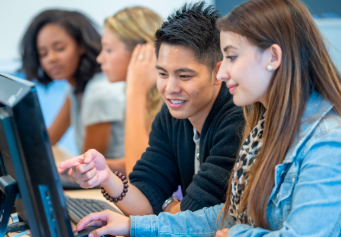Getting students involved in class can sometimes feel like a puzzle. But with the right mix of creativity and structure, participation can turn into something students genuinely look forward to. Here are some classroom-tested techniques that make it easier—and more enjoyable—for students to join in and stay engaged.
1. Use Think-Pair-Share for Inclusive Discussions
Not all students feel confident speaking in front of the class right away. Think-Pair-Share gives everyone time to reflect, talk to a partner, and then share with the group. This method creates a safe path toward open class conversations.
2. Gamify Participation with Points or Badges
Adding a touch of game elements—like points, small rewards, or fun badges for participation—can energize even the most reserved students. It turns engagement into something students are excited to earn.
3. Rotate Roles for Group Work
Assign rotating roles such as “note-taker,” “timekeeper,” or “discussion leader” during group tasks. This ensures every student has a chance to lead, listen, and contribute in a structured way.
4. Incorporate Student Choice
When students feel like their voice matters, they’re more likely to participate. Let them choose from a few project topics or pick between formats—like video presentations, posters, or written reports.
5. Use Technology as a Bridge
Tools like interactive polls, classroom response systems, or digital whiteboards allow quieter students to engage without needing to speak up. It’s a gentle way to increase confidence and build momentum.
6. Try Entry and Exit Prompts
Start the day with a quick question and end with a reflective prompt. These short activities help ease students into and out of participation, especially helpful for those who need time to warm up.
7. Celebrate Ideas, Not Just Accuracy
Create a classroom culture where all ideas are welcomed—even the ones that don’t hit the mark. When students know their thinking process matters, they’re more willing to speak up and take risks.
8. Make Room for Movement
Not every response needs to be verbal. Use activities that involve movement—like “stand if you agree” or “vote with your feet”—to let students show participation through action.
9. Invite Peer-to-Peer Learning
Encourage students to ask each other questions, lead mini-lessons, or explain concepts in pairs. This kind of exchange builds trust and helps students feel more connected to classroom learning.
10. Reflect on Participation Together
Take a few minutes each week to talk about what’s working and what could improve. Invite students to share what helps them feel more comfortable joining in. Their insights might surprise you.
Conclusion
Participation isn’t about getting everyone to raise their hand at once. It’s about creating spaces where all voices can be heard, in ways that feel natural and respectful. With just a few small changes, your classroom can become a place where every student feels ready to jump in and be part of the learning journey.














